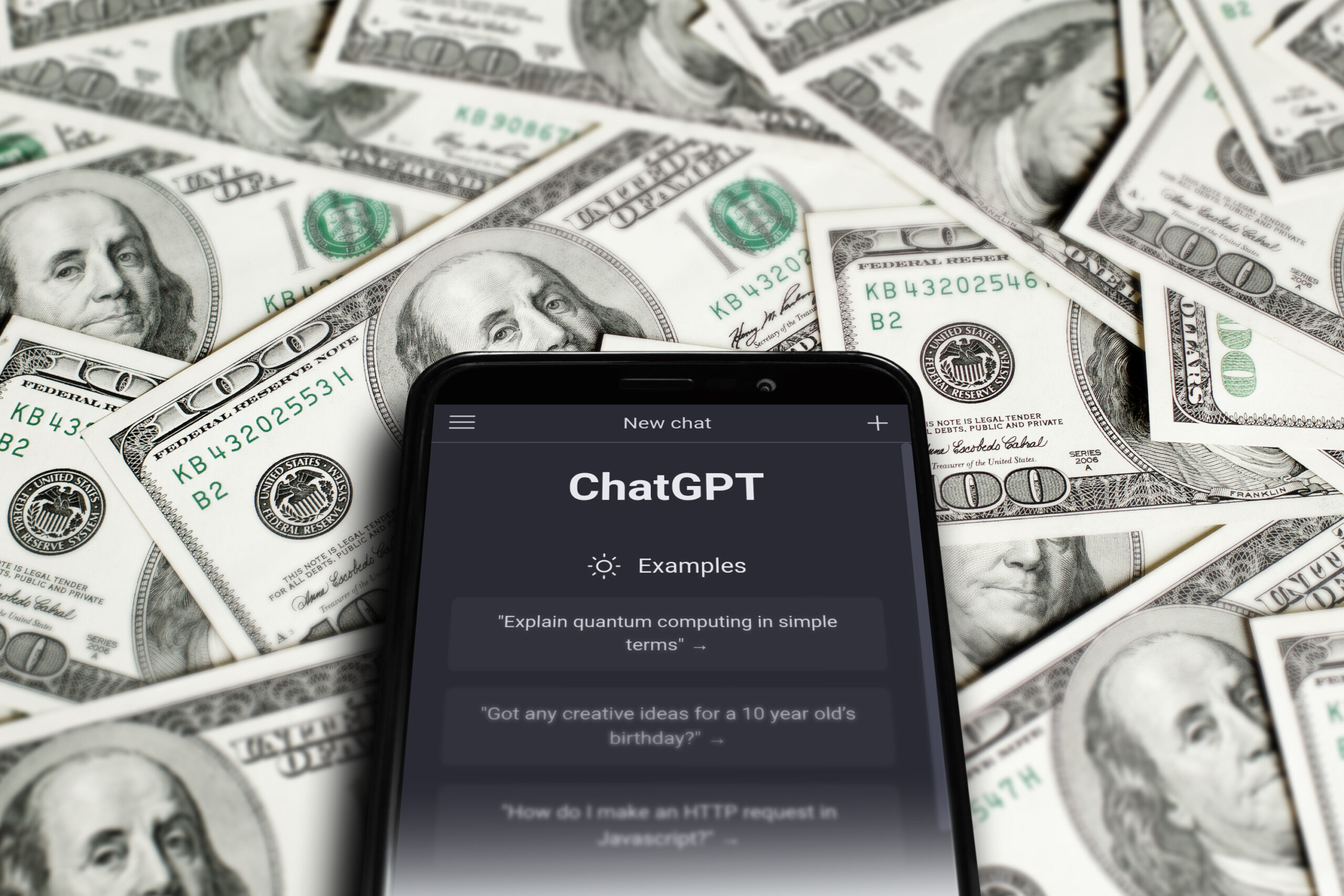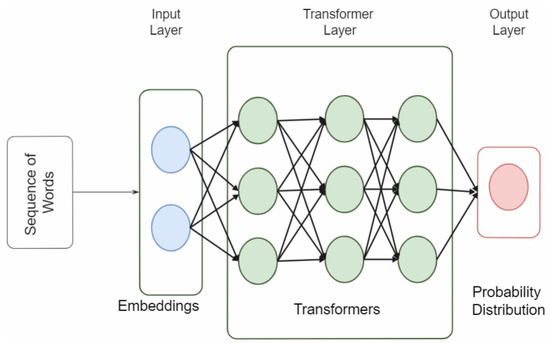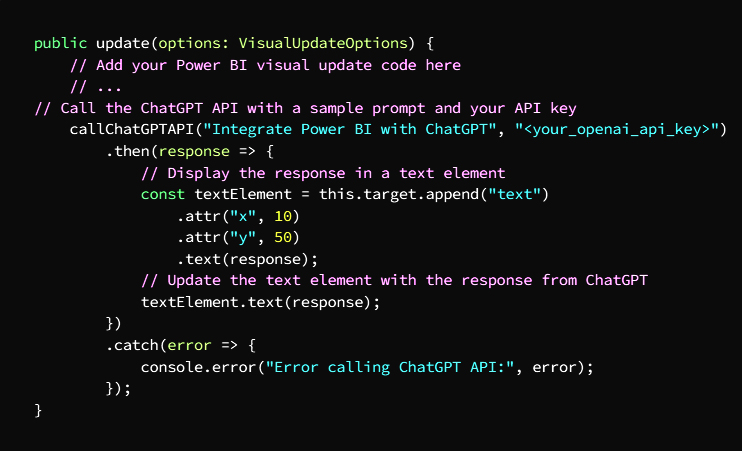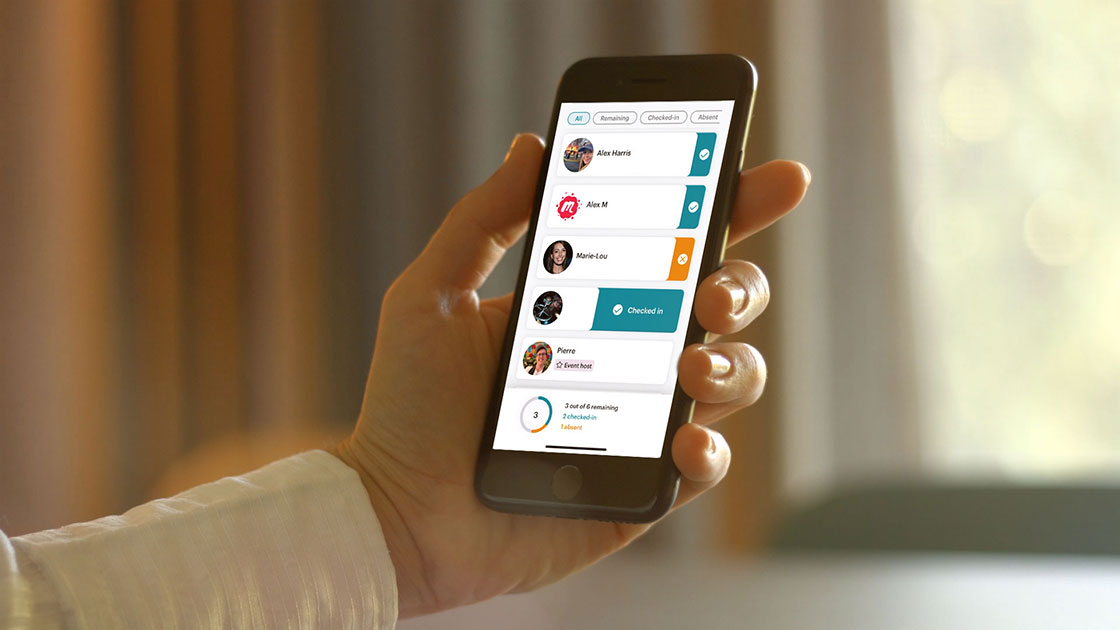
Published: Dec 3, 2024
Launching Your AI Freelancing Career: A Step-by-Step Guide
Launching Your AI Freelancing Career: A Step-by-Step Guide
Hey there! I’ve been in the AI game for years, and let me tell you, it’s been one wild ride. From late-night coding sessions to landing my first big client, I’ve seen it all. Now, I’m here to help you navigate the exciting (and sometimes crazy) world of AI freelancing. Trust me, it’s not just about crunching numbers – it’s about creating a whole new future for yourself!
TLDR: Wondering how to break into AI freelancing? Here's the lowdown on getting started and thriving in this cutting-edge field:
1️⃣ What skills do I need to start freelancing with AI?
To succeed in AI freelancing, you’ll need a solid foundation in programming (Python is a must), machine learning concepts, and data analysis. Familiarity with popular AI frameworks like TensorFlow or PyTorch is a big plus. Don’t worry if you’re not an expert in everything – start with your strengths and keep learning as you go.
2️⃣ How do I find AI freelancing gigs?
Look for opportunities on specialized platforms like Upwork, Toptal, or AI-specific job boards. Network at tech meetups and conferences, and don’t underestimate the power of LinkedIn for connecting with potential clients. Start small with beginner-friendly projects to build your portfolio and reputation.
3️⃣ What types of AI freelancing projects can I expect?
AI freelancing projects can range from developing chatbots and virtual assistants to creating predictive models for businesses. You might work on natural language processing tasks, computer vision projects, or even help companies implement AI solutions to optimize their operations. The possibilities are as vast as your imagination!
Table of Contents
- Assessing Your AI Skills
- Building Your AI Portfolio
- Finding AI Freelance Opportunities
- Pricing Your AI Services
- Managing AI Freelance Projects
- Staying Current in AI
- Scaling Your AI Freelance Business
Assessing Your AI Skills
Let’s face it, jumping into AI freelancing can feel like diving into the deep end of a pool filled with ones and zeros. But don’t sweat it! I’ve been there, and I’m here to help you figure out where you stand and how to level up your game.
Core Skills for AI Freelancing
First things first, let’s break down the must-have skills:
-
- It’s the bread and butter of AI development. If you’re not comfortable with Python, that’s your starting point.
- Pro tip: Get familiar with libraries like NumPy and Pandas. They’ll save you tons of time.
-
- Understanding algorithms like linear regression, decision trees, and neural networks is crucial.
- Don’t just memorize formulas – try to grasp the intuition behind each concept.
Data Analysis and Visualization

- You’ll be swimming in data. Knowing how to clean it, analyze it, and present it is key.
- Tools like Matplotlib and Seaborn are your best friends here.
-
- Get to know TensorFlow or PyTorch. You don’t need to master both, but being proficient in one is a game-changer.
Self-Assessment Guide
Okay, now let’s figure out where you stand:
Beginner: You’re just starting out. Maybe you’ve taken a few online courses or tinkered with some basic Python scripts.
- Focus on mastering Python and understanding ML basics.
- Start with simple projects like building a linear regression model from scratch.
Intermediate: You’ve got a good grasp of Python and have implemented a few ML algorithms.
- Dive deeper into advanced algorithms and start exploring deep learning.
- Try your hand at a Kaggle competition to test your skills.
Advanced: You’re comfortable with complex ML models and have experience with real-world projects.
- Focus on specializing in areas like NLP or computer vision.
- Consider contributing to open-source AI projects to boost your visibility.
Identifying Your Niche
Remember, you don’t need to be an expert in everything. Find your sweet spot:
- Natural Language Processing (NLP)
 If you love working with text data, this could be your calling.
If you love working with text data, this could be your calling. - Computer Vision More of a visual person? Dive into image and video processing.
- Reinforcement Learning Perfect for those who like to think about decision-making processes.
Popular AI Tools and Technologies
Get familiar with these tools to boost your marketability:
-
- Essential for data exploration and sharing your work with clients.
-
- Version control is crucial. Learn it, love it, use it religiously.
-
- Containerization makes deploying your AI models a breeze.
Cloud Platforms
- AWS, Google Cloud, or Azure – pick one and get comfortable with it.
Continuous Learning Strategy
AI is evolving faster than you can say “neural network.” Here’s how to keep up:
- Set aside time each week for learning. Even just an hour a day can make a huge difference.
- Follow AI researchers on Twitter. It’s a goldmine of cutting-edge info.
- Join online communities like Reddit’s r/MachineLearning to stay in the loop and get your questions answered.
Remember, everyone starts somewhere. I began my journey with a rickety laptop and a lot of confusion about what “gradient descent” actually meant. Now, I’m helping companies build AI systems that seemed like science fiction just a few years ago. With dedication and the right approach, you’ll be amazed at how quickly you can progress in this field. So, assess where you are, pick your path, and let’s get coding!
Building Your AI Portfolio
Alright, let’s talk about creating a killer AI portfolio that’ll make clients sit up and take notice. When I first started out, my portfolio was about as impressive as a blank Google Doc. But over time, I learned what really catches a client’s eye. Here’s how you can build a portfolio that showcases your AI skills and lands you those dream projects.
Showcase Your Best Work
-
- Create a well-organized GitHub repo to host your code.
- Make sure your README files are clear and informative.
- I once landed a big contract because the client loved how I documented my code!
Personal Website
- Build a simple yet professional site to showcase your projects.
- Include a blog section where you can write about your AI experiences and insights.
-
- Participate in competitions to show off your skills.
- Share your notebooks and datasets to demonstrate your expertise.
Types of Projects to Include
-
- Create a chatbot using natural language processing.
- Showcase how it handles different user queries.
-
- Build a model that can identify objects in images.
- Use a dataset like CIFAR-10 or ImageNet to train your model.
-
- Develop a program that can analyze the sentiment of text data.
- Use it on real-world data like product reviews or tweets.
-
- Create a system that can suggest products or content to users.
- Explain the algorithms you used and why.
Making Your Portfolio Stand Out
Tell a Story
- Don’t just show the final product. Explain your thought process.
- Share the challenges you faced and how you overcame them.
Highlight Real-World Applications
- Connect your projects to actual business problems.
- I once included a project where I predicted housing prices, and it caught the eye of a real estate tech company!
Use Visualizations
- Include charts, graphs, and interactive elements to make your work more engaging.
- Tools like Matplotlib or D3.js can help create impressive visuals.
Showcase Diverse Skills
- Include projects that demonstrate different aspects of AI and machine learning.
- Mix it up with supervised, unsupervised, and reinforcement learning projects.
Continuous Improvement
Regular Updates
- Keep your portfolio fresh with new projects and improvements to existing ones.
- I try to add something new at least once a month.
Seek Feedback
Stay Current
- Incorporate new AI technologies and techniques as they emerge.
- Recently, I added a project using GPT-3, and it’s been a great conversation starter with potential clients.
Case Study: My Game-Changing Project
Let me share a quick story. A few years back, I worked on a project predicting customer churn for a small e-commerce business. I used a combination of logistic regression and random forests to achieve 85% accuracy. The real kicker? I created an interactive dashboard using Streamlit that allowed non-technical users to input customer data and get churn predictions in real-time.
This project became the centerpiece of my portfolio. It showed not just my technical skills, but also my ability to create user-friendly solutions for real business problems. That single project led to three new client contracts within a month of showcasing it!
Remember, your portfolio is more than just a collection of code—it’s your AI story. Make it compelling, make it unique, and most importantly, make it yours. Happy building!
Finding AI Freelance Opportunities
Alright, let’s dive into the nitty-gritty of landing those sweet AI gigs. When I first started out, finding work felt like searching for a needle in a digital haystack. But over time, I’ve discovered some killer strategies that’ll help you get your foot in the door and start building your AI empire.
Online Platforms for AI Freelancers
-
- The granddaddy of freelance platforms. I landed my first big AI project here.
- Pro tip: Start with smaller, quick-win projects to build up your ratings.
-
- For the crème de la crème of AI talent. Tough to get in, but high-paying gigs.
- They have a rigorous screening process, so brush up on your algorithms!
-
- Not just for competitions. Companies post real AI jobs here too.
- I once snagged a 3-month contract through a Kaggle connection.
-
- Specifically for AI and machine learning roles. It’s like a candy store for AI geeks.
Networking Strategies
-
- Update your profile with your AI skills and projects.
- Engage with posts in AI groups. I once got a referral just by answering someone’s question!
-
- Join local AI and tech meetups. Virtual ones work too!
- Share your experiences. People remember the helpful folks.
-
- Contribute to open-source AI projects.
- I got noticed by a startup after fixing a bug in their ML library.
Creating a Compelling Profile
Showcase Your Unique AI Superpowers
- Highlight specific AI technologies you’ve mastered.
- Example: “Developed a custom CNN for real-time object detection, improving accuracy by 15%.”
Quantify Your Achievements
- Use numbers to back up your claims.
- “Reduced model training time by 30% using distributed computing techniques.”
Highlight Industry-Specific Experience
- Mention AI applications in different sectors.
- “Applied NLP techniques to analyze customer feedback for a Fortune 500 retail company.”
Crafting Winning Proposals
Personalize Each Pitch
- Show you’ve done your homework about the client’s needs.
- “I noticed your company is expanding into predictive maintenance. Here’s how my experience with time-series forecasting can help…”
Offer a Unique Insight
- Provide a quick tip or observation to showcase your expertise.
- “Have you considered using transfer learning? It could significantly reduce your data requirements.”
Propose a Mini-Project
- Offer to do a small, paid test project to demonstrate your skills.
- “I’d be happy to build a proof-of-concept model using a subset of your data.”
Unconventional Strategies
-
- Write articles about your AI projects and insights.
- I once got a client who read my article on Explainable AI and reached out directly.
-
- Create tutorial videos on AI concepts or coding walkthroughs.
- Don’t worry about production quality. My most popular video was shot on my phone!
-
- Follow AI thought leaders and engage in discussions.
- Use hashtags like #AIFreelance or #MachineLearningJobs to find opportunities.
Handling Rejections and Building Resilience
Learn from Each “No”
- Ask for feedback when you don’t get a gig.
- I once revamped my entire portfolio based on a client’s constructive criticism.
Stay Updated with AI Trends
- Subscribe to newsletters like Import AI or The Algorithm.
- Knowing the latest AI buzz can give you an edge in interviews.
Build a Support Network
- Connect with other AI freelancers.
- We have a Discord group where we share tips and sometimes even subcontract work.
Remember, finding AI freelance work is part hustle, part skill, and part persistence. I started out taking small data cleaning jobs, and now I’m working on cutting-edge NLP projects for tech giants. Keep pushing, keep learning, and don’t be afraid to put yourself out there. The AI world is hungry for talent, and with these strategies, you’ll be the one they’re looking for!
Pricing Your AI Services
Let’s talk money, folks! When I first started out, I was charging peanuts for my AI skills. Big mistake. Now I know better, and I’m here to help you avoid the same pitfalls. Here’s how to price your AI services like a pro.
Understanding Your Value
First things first, you need to know what you’re worth. This isn’t just about your coding skills – it’s about the value you bring to a project.
Skill Level Assessment
- Beginner: Focus on building experience. Start with lower rates, but don’t sell yourself short.
- Intermediate: You can command higher rates. Think $50-100/hour, depending on the project.
- Expert: Sky’s the limit. I know AI specialists charging $200+/hour.
Project Complexity
- Simple data analysis might be on the lower end.
- Building a custom neural network? That’s premium pricing territory.
Pricing Models
There’s no one-size-fits-all approach. Here are some models to consider:
Hourly Rate
- Great for smaller tasks or when the scope is unclear.
- Be honest about your hours. I use Toggl to track my time.
Project-Based Pricing
- Better for larger, well-defined projects.
- Always add a buffer for unexpected issues. Trust me, they always pop up.
Value-Based Pricing
- This is where the big bucks are. Price based on the value you provide to the client.
- If your AI model saves a company millions, your price should reflect that.
Retainer Model
- For ongoing AI support or consultation.
- I have a client on a monthly retainer for $5000. It provides steady income and they get priority access to my brain.
Factors to Consider
When setting your prices, keep these in mind:
Market Rates
Geographic Location
- Rates can vary wildly depending on where you (and your clients) are based.
- I once doubled my rate for a client in Silicon Valley. They didn’t bat an eye.
Project Duration
- Longer projects might warrant a slight discount.
- Short, urgent projects? That’s when you can charge a premium.
Your Expenses
- Factor in costs like software licenses, cloud computing resources, etc.
- Don’t forget about taxes! Set aside a portion of each payment.
Strategies for Increasing Your Rates
As you gain experience, don’t be afraid to raise your prices. Here’s how:
Gradual Increases
- Raise your rates by 10-15% every 6-12 months.
- I started at $40/hour. Now? Let’s just say I’ve added a zero.
Specialization
- Become an expert in a niche area like computer vision or NLP.
- Specialized skills command higher rates.
Upselling and Packages
- Offer additional services. Basic model + deployment + maintenance = higher overall value.
- I once turned a $2000 project into a $10,000 package by suggesting additional features.
Results-Based Pricing
- If your AI solution significantly boosts a client’s bottom line, negotiate a percentage.
- One of my recommendation systems increased a client’s sales by 30%. You bet I got a nice bonus for that.
Negotiation Tips
Negotiating can be scary, but it’s essential. Here are some tricks:
Know Your Bottom Line
- Have a minimum rate in mind. Don’t go below it.
- My rule? If it doesn’t excite or scare me, the price is too low.
Emphasize Value, Not Time
- Clients care about results, not how long it takes you.
- “This AI solution could potentially increase your efficiency by 40%” sounds better than “It’ll take me 40 hours.”
Be Confident
- If a client balks at your rate, stand your ground.
- I once lost a client by not budging on my price. A week later, they came back and agreed to my terms.
Offer Options
- Present three tiers of service. Most clients pick the middle option.
- My tiers usually look like: Basic Model, Advanced Model + Testing, Full Solution with Deployment and Support.
Remember, pricing is as much an art as it is a science. It took me years to feel comfortable charging what I’m worth. Start where you’re comfortable, but always be ready to level up. Your skills are valuable, and your prices should reflect that. Now go out there and make some AI magic – and get paid well for it!
Managing AI Freelance Projects
Alright, let’s dive into the nitty-gritty of managing AI freelance projects. I’ve been in the trenches, and let me tell you, it’s not always smooth sailing. But with the right approach, you can turn even the most complex AI project into a well-oiled machine.
Setting Clear Expectations
First things first, you need to get on the same page with your client. Here’s how:
Detailed Project Scope
- Break down the project into specific milestones and deliverables.
- I once had a client who wanted a “simple chatbot.” Turns out, they needed a full-blown customer service AI. Always dig deeper!
Timeline and Deadlines
- Be realistic about timeframes. AI projects often have unexpected challenges.
- I use Trello to create visual project timelines. Clients love seeing the progress.
Communication Channels
- Agree on how and when you’ll communicate. Daily stand-ups? Weekly reports?
- Slack is my go-to for quick updates. For more formal communications, nothing beats good old email.
Managing the Development Process
Now, let’s talk about keeping your project on track:
Agile Methodology
- Embrace iterative development. It’s perfect for AI projects where requirements can shift.
- I use two-week sprints, showing progress to the client at the end of each one.
Version Control
- Git is your best friend. Commit early, commit often.
- I once had to roll back an entire week’s work due to a data issue. Thank goodness for version control!
Documentation
- Document everything. Your future self will thank you.
- I use Jupyter Notebooks to combine code, explanations, and visualizations. Clients love it.
Handling Data and Privacy
Data is the lifeblood of AI projects. Treat it with care:
Data Security
- Use encrypted channels for data transfer. ProtonMail is great for sensitive communications.
- If possible, work with anonymized data. It reduces headaches all around.
Data Quality Checks
- Always validate the data you receive. Garbage in, garbage out.
- I once spent a week building a model, only to realize the data was full of duplicates. Lesson learned!
Clear Data Usage Agreements
- Specify how the data will be used, stored, and deleted after the project.
- I have a standard data agreement template that I customize for each client.
Dealing with Technical Challenges
AI projects are notorious for unexpected hurdles. Here’s how to handle them:
Regular Code Reviews
- If possible, have a peer review your code. Fresh eyes catch silly mistakes.
- I’m part of an online AI community where we do code reviews for each other. It’s been a game-changer.
Performance Monitoring
- Keep an eye on your model’s performance. MLflow is great for tracking experiments.
- I once caught a gradual decline in model accuracy that would have been a disaster if left unchecked.
Scalability Considerations
- Think about how your solution will scale from the get-go.
- I learned this the hard way when a recommendation system I built couldn’t handle the client’s full dataset. Oops!
Client Communication and Education
Remember, not all clients speak “AI.” Here’s how to bridge the gap:
Regular Updates
- Keep the client in the loop, even if progress feels slow.
- I send weekly update emails with a traffic light system: Green (on track), Yellow (minor issues), Red (need decisions).
Visualizations and Demos
- A picture is worth a thousand words. Use tools like Matplotlib or Plotly to visualize results.
- I once turned a complex natural language processing model into an interactive web demo. The client was thrilled!
Manage Expectations
- Be honest about what AI can and can’t do. No overpromising!
- I always include a “limitations” section in my project proposals. It saves a lot of headaches down the line.
Handling Revisions and Feedback
Feedback is inevitable. Here’s how to handle it gracefully:
Structured Feedback Process
- Use a tool like Google Forms to gather specific, actionable feedback.
- I once had a client give vague feedback like “make it better.” Never again. Now I ask pointed questions.
Iteration Sprints
- Allocate time for revisions in your initial project plan.
- I typically budget 20% of the project time for revisions. It’s usually enough, and clients appreciate the foresight.
Know When to Push Back
- Sometimes, the client’s requests might not be technically feasible or could harm the model’s performance.
- I once had to explain why adding more features to a model was actually reducing its accuracy. Data science lesson 101 for the client!
Remember, managing AI freelance projects is as much about people skills as it is about technical know-how. Be clear, be honest, and always keep learning. Every project is a chance to refine your process and grow your skills. Now go out there and build some amazing AI solutions!
Staying Current in AI
Hey there, fellow AI enthusiasts! Let’s talk about staying on top of this wild, ever-changing field. Trust me, I’ve had my fair share of “wait, when did that become a thing?” moments. But over the years, I’ve developed some strategies to keep my finger on the pulse of AI. Let me break it down for you.
Continuous Learning Resources
-
- arXiv is my go-to for the latest research papers.
- Pro tip: Start with the abstracts. If it piques your interest, dive deeper.
-
- “Lex Fridman Podcast” and “TWIML AI Podcast” are my favorites for long drives.
- I once got a brilliant idea for a client project while listening to a podcast on federated learning.
Engaging with AI Communities
-
- Subreddits like r/MachineLearning and r/artificial are bustling with discussions.
- I once debugged a tricky TensorFlow issue thanks to a kind Redditor.
-
- Not just for debugging! The AI and ML tags are full of insightful questions and answers.
- Answering questions here has sharpened my skills more than I’d like to admit.
-
- Local AI meetups are fantastic for networking and learning.
- I attended a meetup in Austin last year and ended up collaborating on an open-source NLP project.
Following AI Thought Leaders
-
- Follow AI researchers and practitioners. My top picks:
- Their tweets often lead me down fascinating AI rabbit holes.
-
- Publications like “Towards Data Science” and “Towards AI” are treasure troves of practical insights.
- I make it a point to read at least one AI-related article during my morning coffee.
Hands-On Practice
-
- Nothing beats practical experience. Kaggle keeps you on your toes.
- I participated in the “Google AI Open Images - Object Detection Track” last year. Didn’t win, but learned a ton about object detection.
Personal Projects
- Set aside time for experimenting with new AI techniques.
- I’m currently tinkering with GANs to generate art. It’s mind-blowing and humbling at the same time.
Attending AI Conferences and Workshops
Major Conferences
Online Workshops
- With the rise of virtual events, attending workshops has become more accessible.
- I recently attended a workshop on Explainable AI hosted by MIT. It was eye-opening.
Leveraging AI Tools for Learning
-
- It’s like pair programming with an AI. Great for exploring new libraries.
- I use it to quickly prototype ideas. It’s both a learning tool and a productivity booster.
-
- Free GPU access for experimenting with deep learning models? Yes, please!
- I’ve used Colab to teach myself PyTorch. The ability to quickly iterate and experiment is invaluable.
Balancing Depth and Breadth
Here’s the tricky part: you can’t be an expert in everything. My strategy:
Deep Dive into One Area
- I’ve chosen to specialize in Natural Language Processing.
- This focus has landed me some exciting projects, like building a sentiment analysis tool for a major social media platform.
Stay Informed on Others
- I keep a “surface-level” understanding of other AI domains.
- This broad awareness has helped me collaborate effectively with specialists in other areas.
Remember, staying current in AI is a marathon, not a sprint. It’s about building habits that keep you learning consistently. I’ve made it a part of my daily routine, like brushing my teeth or checking emails. And trust me, the payoff is worth it. Not only does it keep your skills sharp, but it also opens doors to exciting opportunities you never saw coming.
So, dive in, stay curious, and don’t be afraid to experiment. The AI field is moving fast, but with these strategies, you’ll be riding the wave instead of getting swept away. Now, if you’ll excuse me, I’ve got a new paper on transformers to read!
Scaling Your AI Freelance Business
Alright, let’s talk about leveling up your AI freelance game. I remember when I first started out, working from my tiny apartment in Austin, Texas. Now, I’m running a thriving AI consultancy. Here’s how you can scale your business and take it to the next level.
Expanding Your Service Offerings
Diversify Your AI Expertise
- Branch out into complementary areas. I started with machine learning, then expanded into computer vision and NLP.
- Pro tip: Learn MLOps. It’s a game-changer for managing AI projects at scale.
End-to-End Solutions
- Don’t just build models. Offer deployment and maintenance services.
- I once turned a one-off project into a year-long contract by offering to manage the model in production.
AI Strategy Consulting
- As you gain experience, start offering strategic advice to businesses.
- I now charge premium rates for helping companies plan their AI initiatives.
Building a Team
Identify Key Roles
Cultivate a Network of Specialists
- Build relationships with AI experts in different domains.
- I have a go-to person for deep learning and another for reinforcement learning.
Implement Collaboration Tools
Streamlining Your Processes
Standardize Project Workflows
- Create templates for project proposals, contracts, and reports.
- I developed a custom Jupyter Notebook template for initial data analysis. It saves hours on every project.
Automate Repetitive Tasks
Implement Quality Control Measures
Marketing and Brand Building
Develop a Strong Online Presence
- Create a professional website showcasing your projects and expertise.
- I started a blog on Medium about AI applications in business. It’s now a major source of leads.
Leverage Social Media
Produce Valuable Content
- Create tutorials, case studies, or whitepapers to demonstrate your expertise.
- I launched a YouTube channel explaining complex AI concepts in simple terms. It’s now a key part of our brand.
Financial Management for Growth
Reinvest in Your Business
- Allocate funds for learning resources, better equipment, and software licenses.
- I invested in a high-end GPU setup for faster model training. It paid for itself within months.
Diversify Your Income Streams
- Consider creating AI courses or e-books as passive income sources.
- I developed an online course on Udemy about practical machine learning. It now provides a steady monthly income.
Plan for Scalability
- Use cloud services like AWS or Google Cloud to handle increasing computational needs.
- We migrated from local servers to AWS, allowing us to take on larger projects without infrastructure headaches.
Case Study: From Solo Freelancer to AI Agency
Let me share a quick story of how I scaled my business. Two years ago, I was juggling multiple clients and working 60-hour weeks. I realized I needed to change my approach.
- Specialization: I focused on NLP projects for the healthcare industry.
- Team Building: I brought on a data scientist and a project manager.
- Process Optimization: We implemented Agile methodologies using Scrum.
- Value-Based Pricing: We shifted from hourly rates to project-based pricing, emphasizing the value we deliver.
The result? We tripled our revenue in 18 months, and I actually work fewer hours now.
Remember, scaling your AI freelance business is about working smarter, not just harder. It’s about building systems that allow you to deliver more value without burning out. It takes time and effort, but the payoff is worth it. You’ve got this!























